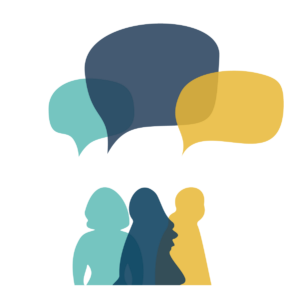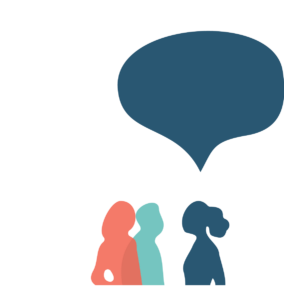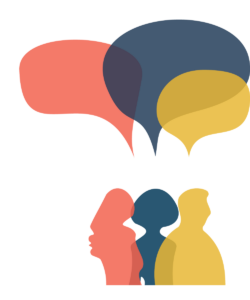Amplifying Student-Family-Teacher Voice in Schools
Imagine a school where every student feels safe and heard, every family feels valued, and every teacher feels supported. This vision becomes attainable when we prioritize the voices of our community members, transforming them into active partners in their learning process by gathering evidence of “voice” from our learning community to ensure we advance learner agency for absolutely every learner (families, students, and teachers).
Learner agency gives students the autonomy to drive their learning, fostering self-efficacy, resilience, and self-worth. For students facing systemic injustices, agency is a lifeline, offering hope and a path to success in an often inequitable world of social barriers that are not in their control. By championing learner agency, educators are not merely teaching; they are affirming the inherent worth and potential of every student and family. This approach transforms learning into a powerful force for equity, ensuring that all people feel seen, heard and are capable of achieving their aspirations.
Why Do We Listen to Learn?
By collecting and analyzing Street Data (perception-voice data), we delve deeper than test scores and attendance records, uncovering the rich, nuanced stories that drive true educational equity, inclusion, belonging, and innovation.
1. Personalized Learning
- Understanding Needs: Voice data helps in understanding the unique needs, preferences, and circumstances of each student and their family.
- Tailored Interventions: It enables educators to design personalized learning plans and interventions that cater to individual student needs, promoting better engagement and success.
2. Equity and Inclusion
- Addressing Disparities: By listening to diverse voices, schools can identify and address disparities in education, ensuring that all students have equal opportunities to succeed.
- Cultural Relevance: It ensures that the curriculum and teaching methods are culturally responsive-sustaining and relevant to the student population.
3. Building Trust and Relationships
- Strengthening Community Ties: Gathering voice data fosters stronger relationships between schools, students, and families, creating a more supportive and collaborative educational environment.
- Self-Empowerment: It empowers students and families by giving them a platform to share their experiences, concerns, and suggestions, making them active participants in the educational process.
4. Continuously Improving Outcomes
- Informed and Shared Decision-Making: Schools can make more informed decisions about policies, programs, and practices that directly impact student learning and well-being.
- Responsive Feedback: Designing continuous feedback loops from students and families helps in refining and improving educational strategies and interventions.
5. Future-Ready Skills
- Critical Thinking and Communication: Engaging with voice data encourages the development of critical thinking and communication skills among students as they learn to articulate their needs and perspectives.
- Adaptability: It prepares students for a future where adaptability and responsiveness to feedback are crucial skills in a rapidly changing world.
6. Holistic Development
- Addressing Whole-Child Needs: Voice data provides insights into the social, emotional, and academic needs of students, supporting their holistic development.
- Comprehensive Support Systems: Schools can develop comprehensive support systems that address various aspects of student life, from mental health to extracurricular interests.
7. Innovative Practices
- Experimentation and Innovation: Insights from voice data can drive innovation in teaching and learning practices, helping schools to experiment with new approaches and technologies.
- Scalable Solutions: Successful strategies identified through voice data can be scaled and replicated across different schools and districts.
By prioritizing the collection and analysis of student-family street data or voice data, schools of the future can take action by creating more inclusive, responsive, and effective educational spaces that cater personally to the diverse needs of their communities.
 How Do We Listen to Learn?
How Do We Listen to Learn?
Conducting focus groups or-1-1 interviews with your community is an effective way to gather insights, understand their experiences, and involve them in shaping their educational journey. Here’s a guide to conducting these “listen to learn” experiences at your school.
Exploring Learner Identity: Conducting Focus Groups
Understanding learner identity is crucial for creating a learning culture where every learner (student-family-teacher-staff) feels seen, heard, and valued. Conducting focus groups with your learning community about their learner identities provides a platform to gather diverse perspectives and insights, which can shape more inclusive and effective teaching practices. Ensuring that voices are heard and valued is paramount.
Setting Up the Focus Group
- Define the Objective: Clearly outline the purpose of the focus group. Are you aiming to understand how students perceive themselves as learners, identify challenges they face, or explore their aspirations? A well-defined objective will help guide the discussion.
- Choose a Diverse Group: Select a diverse mix of people (student groups, family groups, teachers groups) to ensure a broad range of perspectives. Consider including people representing different grades, backgrounds, and academic abilities to capture a comprehensive view of learner identities.
- Active Listening: Show genuine interest in your group’s responses. Use active listening techniques such as nodding, summarizing their points, validating their emotions, and asking follow-up questions. This not only validates their input but also encourages deeper discussion.
- Encourage Participation: Ensure that all people have the opportunity to speak. Use prompts like “I’d love to hear from someone who hasn’t shared yet” to involve quieter participants.
- Create a Safe Space: Set up a comfortable and welcoming environment. Arrange seating in a circle to promote equality and open conversation. Begin with a warm welcome and explain the importance of their input.
Conducting the Focus Group
1. Icebreakers and Introductions: Start with an icebreaker to help the group relax and get to know each other. Have each student introduce themselves and share a fun fact to build rapport.
2. Guided Discussion: Prepare open-ended questions to encourage deep reflection and conversation. Questions like “How do you see yourself as a learner?” or “What helps you feel most engaged in your learning?” can open up rich dialogue. Be flexible and allow the conversation to flow naturally. Here are some other questions for different focus groups:
Families-Parents-Caregivers
- What are some tips about how _____ learns best?
- What gets in the way of their learning?
- What does ____ love to learn?
- Has anything at school harmed your child? What do you need to heal from?
Students:
- How do you see yourselves as learners?
- How would you describe what a successful learner does at our school?
- How do you learn best? What stops you from learning?
- Is there anything you need to heal from being a member of this school community?
Teachers
- How do you learn best? What stops you from learning?
- How do you collaborate with others to help you learn?
- What is one wish you had for our school to cultivate a stronger learning culture?
3. Active Listening: Show genuine interest in students’ responses. Use active listening techniques such as nodding, paraphrasing their points, and asking follow-up questions. This demonstrates that their opinions are valued and encourages more in-depth sharing.
4. Encourage Participation: Ensure that all students have the opportunity to speak. Use prompts like “I’d love to hear from someone who hasn’t shared yet” to involve quieter participants.
After the Focus Group
- Analyze Insights: Review the notes or recordings to identify key themes and patterns. Look for commonalities and differences in how students describe their learner identities and experiences.
- Share Findings: Communicate the findings with the participants and relevant stakeholders. Create a summary report or presentation highlighting the main themes and insights gathered.
- Actionable Steps: Develop an action plan based on the insights. Consider how these findings can inform teaching practices, support student engagement, and foster a more inclusive learning environment.
- Follow-Up: Keep students informed about how their feedback is being used. Share updates on any changes or initiatives implemented as a result of their input. This shows students that their voices matter and encourages ongoing dialogue.
Conducting focus groups about learner identity with community members is a powerful way to gain insights into their experiences and perceptions. By creating a safe space for open conversation, actively listening, and taking meaningful action based on their feedback, we can establish feedback loops so we better understand and support the diverse identities of students, families, and educators. This not only enhances the learning experience but also fosters a more inclusive and self-empowering learning environment.
Deepening Understanding with 1-1 Interviews
Following the success of focus groups, one-on-one interviews offer a deeper dive into understanding students’ learning identities. These 1-1 interviews can also be a vehicle to amplify learner voice even if you don’t engage members in a focus group. These personal, detailed conversations can uncover nuanced insights into how people perceive themselves as learners and how their educational experiences shape their identities. Here’s a guide to conducting effective one-on-one interviews with students.
Preparing for the Interviews
- Defining Purpose and Goals: Clearly outline the purpose of the interviews. Are you aiming to understand individual learning styles, challenges, aspirations, or personal learning journeys? Defining clear goals will help in framing relevant questions.
- Selecting Participants: Choose a diverse range of interviewees to get a comprehensive understanding of different learning identities. Ensure inclusivity by considering various demographics such as age, background, academic performance, and interests.
- Crafting Questions: Develop a set of open-ended questions that encourage students to reflect on their learning experiences. Questions like “How do you describe yourself as a learner?” or “Can you share a moment when you felt most engaged in learning?” can provide deep insights. Our team has a large bank of interview questions if you need a jumping-off point.
Conducting the Interviews
- Building Rapport: Start the interview with a casual conversation to build a comfortable atmosphere. Establishing trust is crucial for people to feel safe and open up about their personal experiences.
- Active Listening: Practice active listening throughout the interview. Show empathy and understanding by nodding, maintaining eye contact, and occasionally summarizing their points to ensure you’ve understood them correctly.
- Encouraging Depth: Prompt your interviewee to elaborate on their responses. Use follow-up questions like “Can you tell me more about that experience?” or “Why do you think that made a difference for you?” to delve deeper into their stories.
- What helps you learn and what stops you from learning?
- How do you describe learning experiences at our school?
- Describe a learner that you look up to at our school, your family, or community?
- Is there anything you need to heal from that happened at our school?
- Being Flexible: While having a structured set of questions is important, be flexible and follow the conversation’s natural flow. Allow people to steer the discussion to topics they feel are important.
After the Interviews

- Analyzing Insights: Review the interview recordings or notes to identify key themes and patterns. Look for commonalities and differences in how people perceive their learning identities and experiences.
- Synthesizing Findings: Summarize the insights in a coherent manner. Create a report or presentation highlighting the main themes, quotes, and individual stories that illustrate the diverse learning identities.
- Sharing Outcomes: Share the findings with students, educators, family members, and other community members. Use the insights to foster a deeper understanding of student needs and to inform teaching practices and policies.
- Actionable Steps: Develop actionable steps based on the insights gathered. Consider how the findings can be used to support personalized learning approaches, improve student-family-teacher engagement, and create a more inclusive learning environment grounded in belonging.
One-on-one interviews provide a unique opportunity to explore the rich, individual narratives that shape each learning community member’s learning identities. By creating a safe and open space for people to share their personal stories, educators can gain invaluable insights into the diverse ways all members engage with their learning.
Listening and Taking Action Matters
Conducting focus groups and interviews in learning communities provides invaluable insights into the lived experiences, challenges, and aspirations of community members. These qualitative methods amplify marginalized voices, fostering a deeper understanding of the community’s needs and strengths. By engaging directly with the entire community, educators can tailor interventions and strategies that are culturally responsive and contextually relevant, leading to more effective and equitable outcomes. The actionable impact lies in the ability to co-create solutions with the community, ensuring that absolutely every learner’s potential is recognized and nurtured, ultimately transforming your learning landscape into one that is inclusive, self-empowering, just, and loving.
To learn more about cultivating a healthy learning identity in our learners (families, students, and teachers) read more in Amplify Learner Voice through Culturally Responsive Assessment or Leading Impact Teams: Building a Culture of Efficacy and Agency through Mimi & Todd Press.
Sources:
Amplify Learner Voice through Culturally Responsive Assessment, by Bloomberg, Vandas, Tymann, Dukes, Hamilton, Wells, and Fairchild, 2022, Mimi & Todd Press.
Street Data A Next-Generation Model for Equity, Pedagogy, and School Transformation by Sufir and Dugan, 2021, Sage Publications.
Leading Impact Teams: Building a Culture of Efficacy, Edition 1, by Paul Bloomberg and Barb Pitchford, 2017, Corwin Press.
Leading Impact Teams: Building a Culture of Efficacy and Agency, Edition 2, by Paul Bloomberg and Barb Pitchford, 2023, Mimi & Todd Press.



